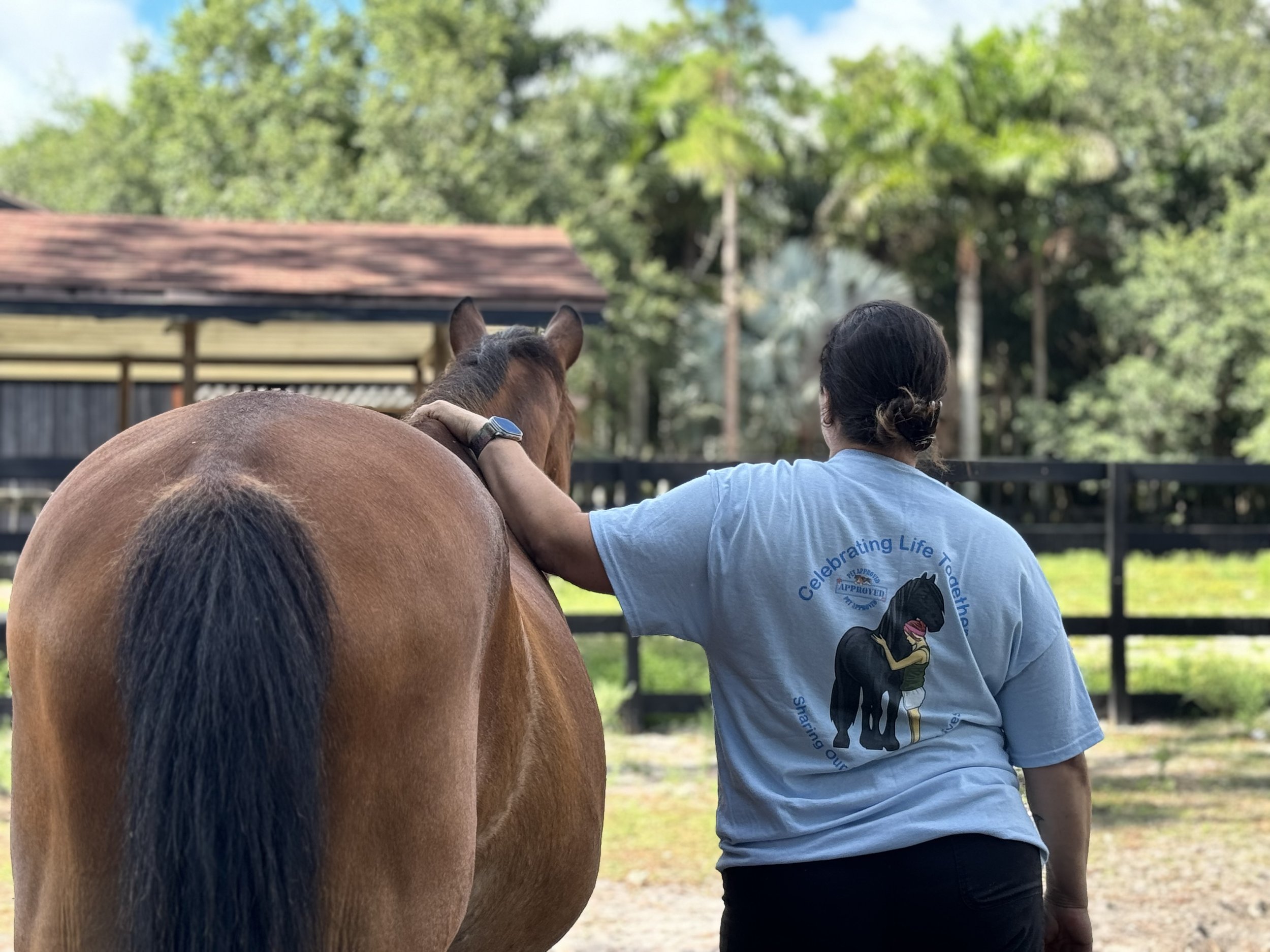Small Steps to Better Horsemanship
For most people, switching to positive reinforcement training requires a massive mental shift and a complete change from everything they thought they “knew” about horses. This can be daunting, but it’s okay if you’re not ready yet. You can still do some things to improve your horsemanship that don’t require you to switch to positive reinforcement.
Change the way you view your horse.
Our horses are doing the best they can to navigate our human-centric world. They’re not trying to “get away” with anything. They’re not trying to become the “herd leader” or be “dominant” over you. They’re not trying to “be the boss”. They’re just trying to survive. Your relationship with your horses should not be based in conflict.
Instead, recognize that your horse's undesirable behaviors or failure to comply stems from confusion, lack of motivation, or fear. If your horse is “misbehaving,” it’s because they’re struggling, not because they’re purposely trying to vex you. Slow down, clean up your communication, and help your horse find the right answer instead of always punishing them for the wrong ones.
Change the way you move your horse.
For some reason, most people move horses from behind when they’re not on halter and lead, or wearing a bridle.
I’ve watched people waving their arms at their horses, yelling at them, brandishing a whip, or swinging a rope to get their horses to move. People do this even when they’re trying to get their horses out of a sticky situation, which turns the situation into a dangerous one because of the over-the-top approach the person uses to move the horse.
Stop acting like a predator. Horses don’t like to be chased.
Instead, when you see your horse where you don’t want them to be, encourage them to move towards you and lead them away. If they won’t follow you, calmly get a halter and lead rope and use those tools to move your horse.
If your horse comes up to you and you don’t want to be bothered, instead of shooing them away, lead them to where you want them to go, or move yourself to a space where your horse cannot access you.
Change the equipment you use.
Much of our equipment is used to control our horses, and when we feel like we don’t have enough control, we use harsher equipment. What’s lacking is the knowledge of how to set our animals up for success, the skill to manage our horses safely, regardless of equipment, and the training required for the behaviors we’re asking them to do.
To improve your horsemanship, learn how to lead your equid without knotted halters or chains. Learn to move your horse forward under saddle without a crop or spurs. Learn to manage your horses with training instead of equipment. If you cannot do these things without these equipment, then you know there are holes in your skills or your horse’s training.
When you stop fighting with your equids and learn how to build a cooperative and affiliative partnership with them, moving into the positive reinforcement paradigm will make much more sense.

